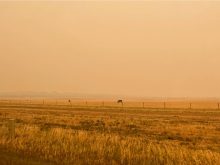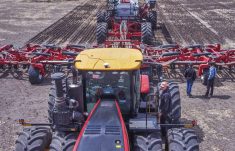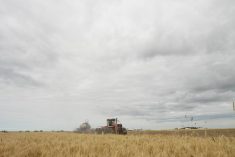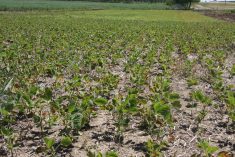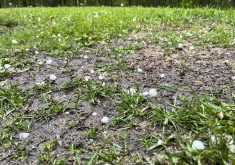Storm damage to crops can result in problems with nitrate accumulations, especially if the crops were heavily fertilized or manured in the spring to optimize yield.
“With volatile weather comes storm damage and, for some producers, this means salvaging crops for feed,” says Andrea Hanson, beef extension specialist, Alberta Agriculture and Forestry, Airdrie.
Hanson cautions producers to use care as salvaged crops may have high levels of nitrates that are toxic to ruminants and emphasizes the importance of testing salvaged feed to establish quality and nitrate levels prior to feeding.
Read Also

India slaps 30 per cent import duty on yellow peas
India has imposed a 30 per cent duty on yellow pea imports with a bill of lading date on or after Nov. 1, 2025.
“Sometimes producers want to wait to see if the crop will recover before salvaging it for feed. That’s when the balancing act starts. The nitrate levels in those damaged crops that were heavily fertilized or manured to optimize yield will have the highest accumulations.”
Hanson says it takes about four to five days after the damage for the nitrates to build to the highest levels. If the plants start to recover, the nitrate levels will return to a lower level about two weeks after the damage, depending on their growth rate. The true balancing act starts when the leaves start to brown off and the plants begin to deteriorate, losing leaf material and yield.
Unless a perennial hay crop is fertilized at high rates, the risk of accumulating nitrate is much lower than in annual crops, Hanson says. “Alfalfa is a plant that only takes up as much nitrogen as it requires on a daily basis. The excess is stored in the nodules. Nitrate accumulation in alfalfa is extremely rare.”
Nitrates accumulate in plants when the plant is stressed. Drought, hail and frost are all stressors that can cause nitrate toxicity. Photosynthesis is disrupted because of the damage to the plant but the roots of the plant are undamaged. As long as the roots are still alive, they continue to push nitrogen to the leaves. With damaged leaves, photosynthesis is disrupted, and the nitrogen (in the form of nitrates) accumulates.
“If a producer does decide to salvage the crop, it’s essential that the nitrate levels are known before any of the feed is used,” says Hanson. “Getting a feed test done is cheap compared to losing an animal to something that can be managed. Once the plant has been cut, the nitrate level is fixed and a feed test can be taken. Be sure to check out Foragebeef.ca for useful information on how to properly sample feed for testing.
Hanson also stresses the importance of finding out from the feed testing laboratory what type of nitrate test was carried out as the limits are different depending on how the nitrate level is reported. “AF’s factsheet Nitrate Poisoning and Feeding Nitrate Feeds to Livestock is a good reference that has the conversion chart for different reporting systems. Often the laboratory will provide the recommendations based on the level outcome.”
“Feeds containing nitrates can be fed depending on the levels of nitrates and the other feed stuffs available,” adds Hanson. “A strategy for feeding high nitrate feed is needed well before creating a feeding plan to reduce the risk of nitrate poisoning.”




